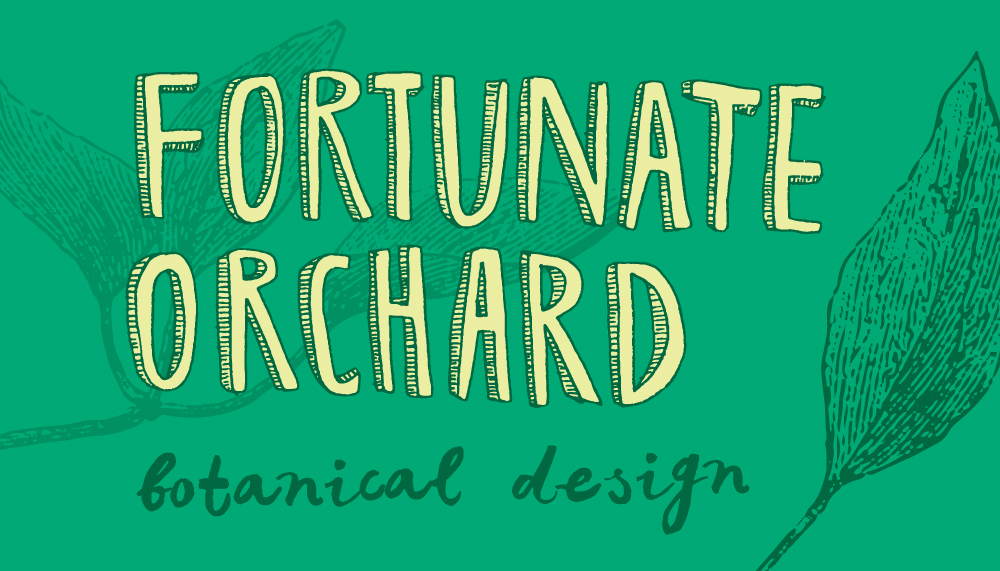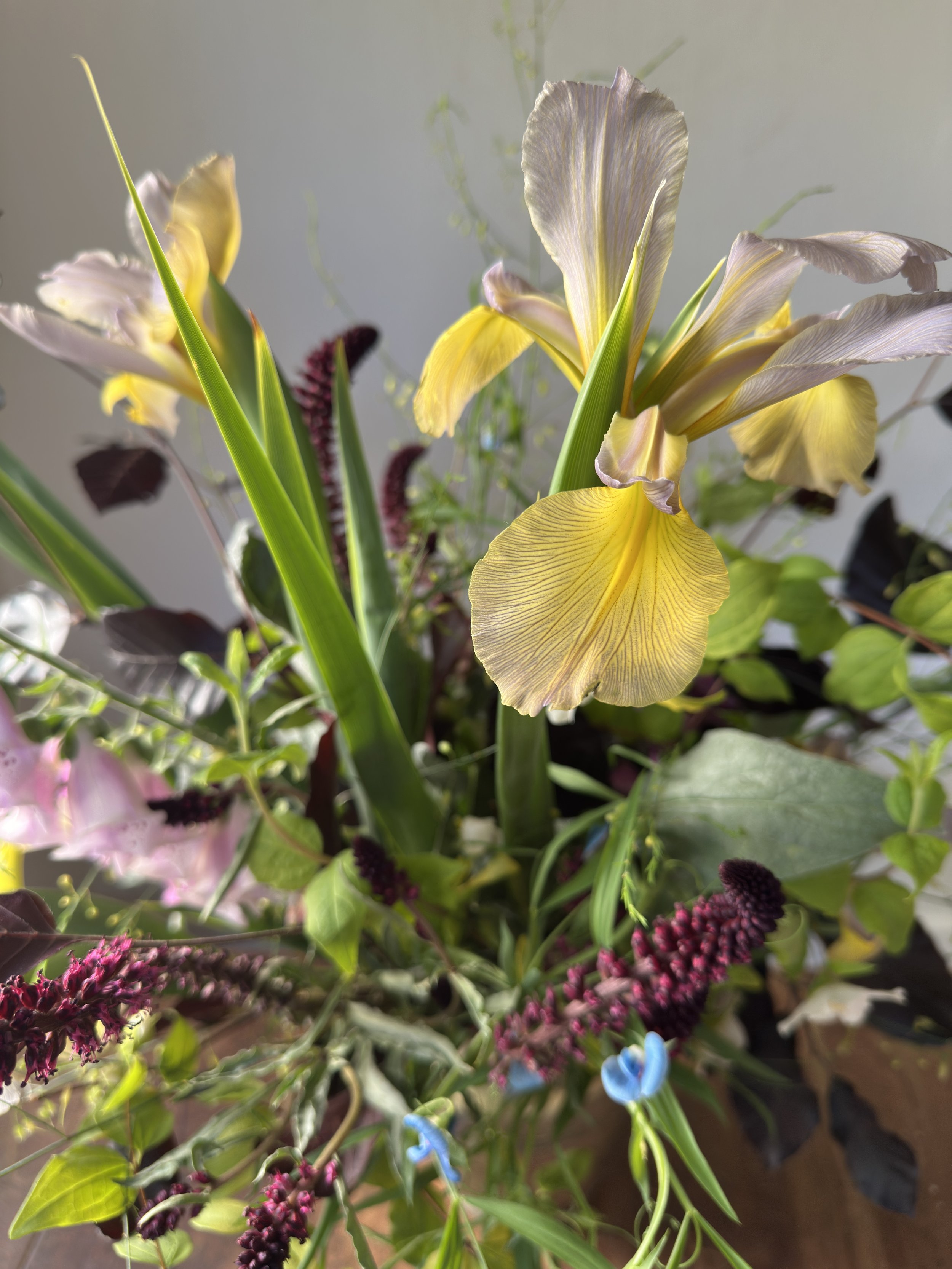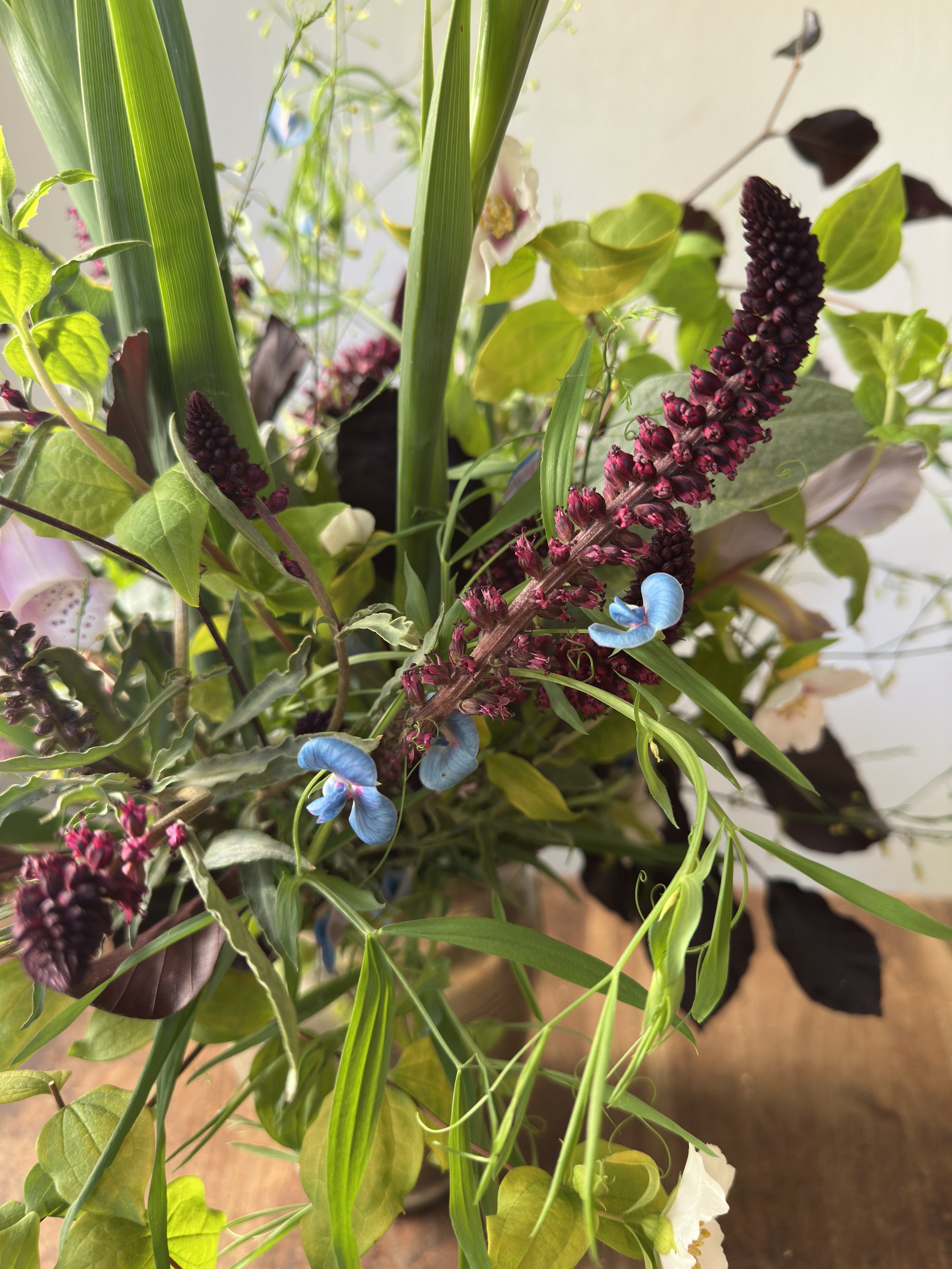Anatomy of a Summer Garden Arrangement
The June garden, plus cuts from Jello Mold Farm and Seattle Wholesale Growers Market.
It is high time for collecting from the garden and bringing the beauty inside, in a vase or a jar or an old tin can. Spring flowers and foliage can be finicky cuts, but by late June most plants are well established enough to generously give little bits of themselves for us to enjoy indoors. I recently stepped into the Fortunate Orchard garden and gathered some pretty little things to add to flowers I had left over from a busy week in the studio. Here’s a short guide to putting together an arrangement with cuts from your garden, all by themselves or to improve a few stems you picked up at the grocery store.
Mock orange, spuria iris, flowering asparagus, beech…
HYDRATION. If you can, gather stems from the garden in the early morning when temps are cool and the garden has had a long night of dewy rest. Place the stems in a deep bucket of cool water and let them hydrate for a few hours or more before you begin arranging them. This will help with the botanicals’ vase longevity.
VESSEL. Watertight is the only requirement. I have a (too) large collection of mason jars, olive oil tins, and other charming refuse that I use for arrangements sized extra large to teensy. I adore a slice of wild garden captured in a cast off vase. If you have a pot or vessel that you love that is not watertight, hide a jar inside and use that to hold the water and flowers. That will take care of business.
I don’t add anything to the water in my arrangements, just plain tap water seems to do the trick. In the past, I’ve added a bit of lemon-lime soda to the vase water (Sprite, for example). The sugar + acid does extend vase life a little, but it also invites fruit flies. I’ve made my choice.
The yellowing tips of the iris foliage + the yellow on the petals = so very lovely
BOTANICALS. The best thing about cutting from the garden is that you are able to choose flowers and foliage that are in their ideal state. The perfect yellowing leaf. An exquisite fennel frond. A nasturtium vine that is half bulbous seed, half fragile flower. These elements are what set a garden arrangement apart from anything sold at a market, and they are divine.
Enjoy each fleeting moment of this season. Over on the Fortunate Orchard You Tube channel you’ll find a few design tutorials, if you’d like to explore the mechanics of floral arranging. Or, just gather stems in a vessel and take in their beauty.
Brilliant blue sweet pea ‘Azureus’ and burgundy lysimachia.





